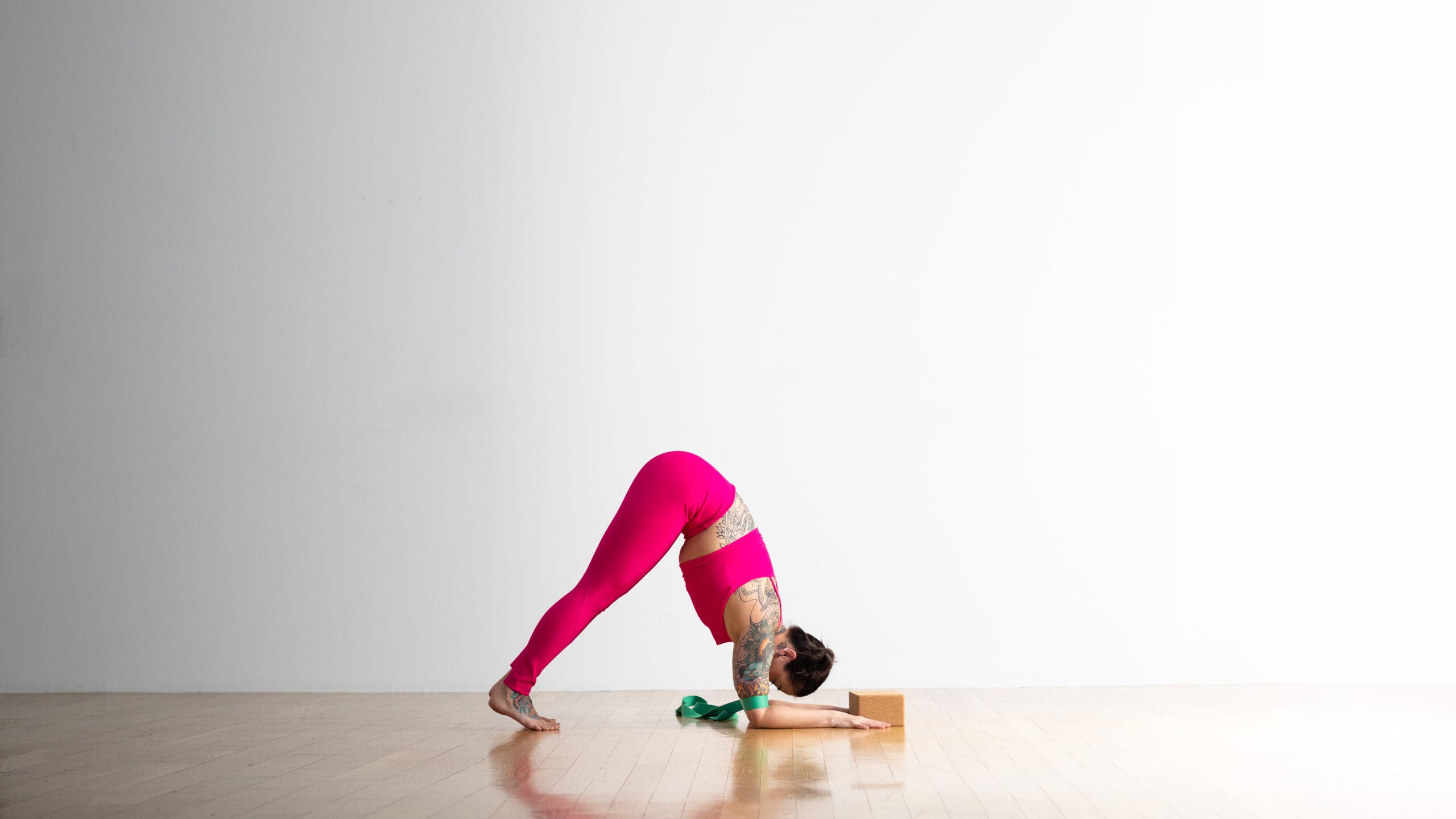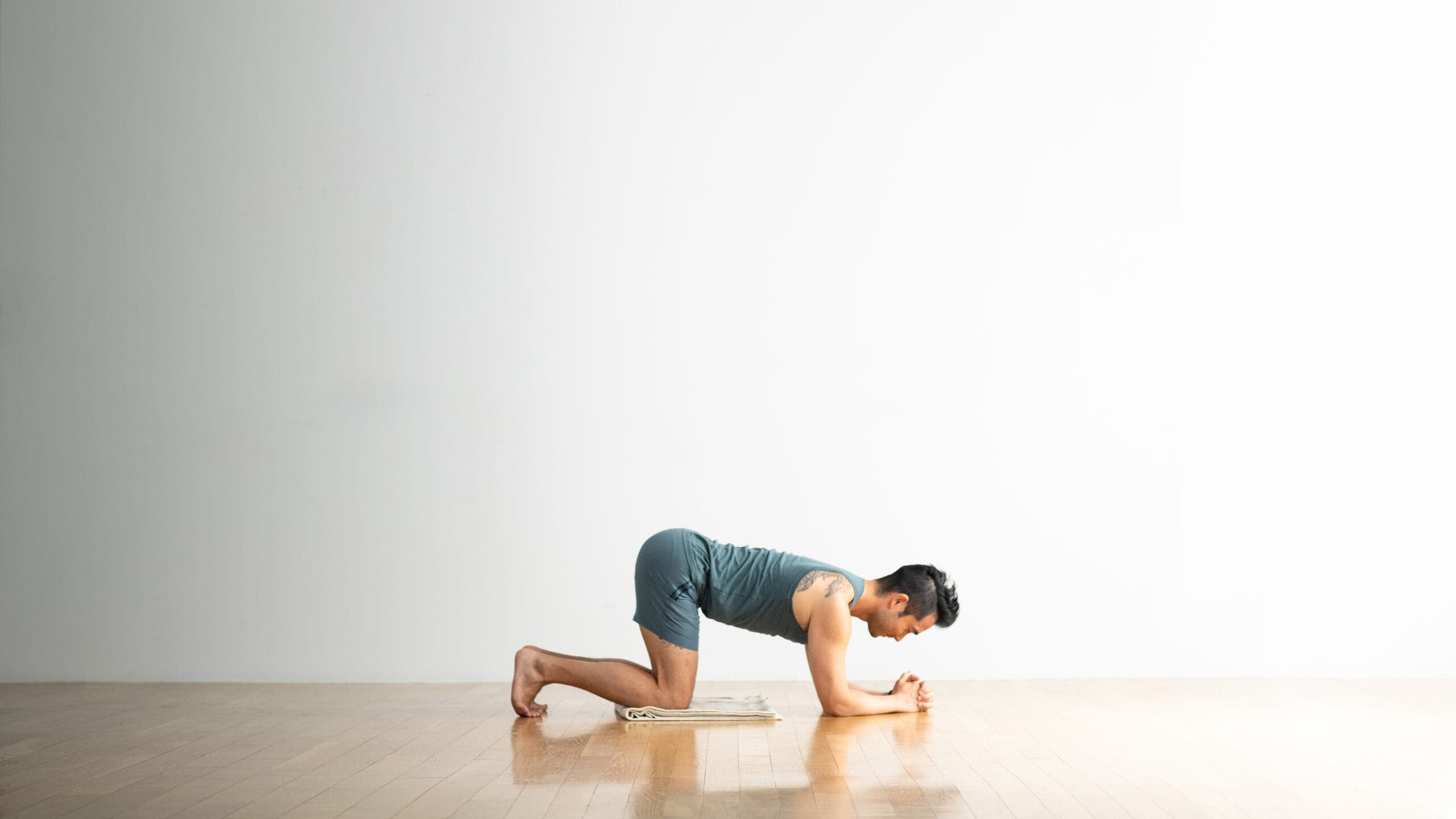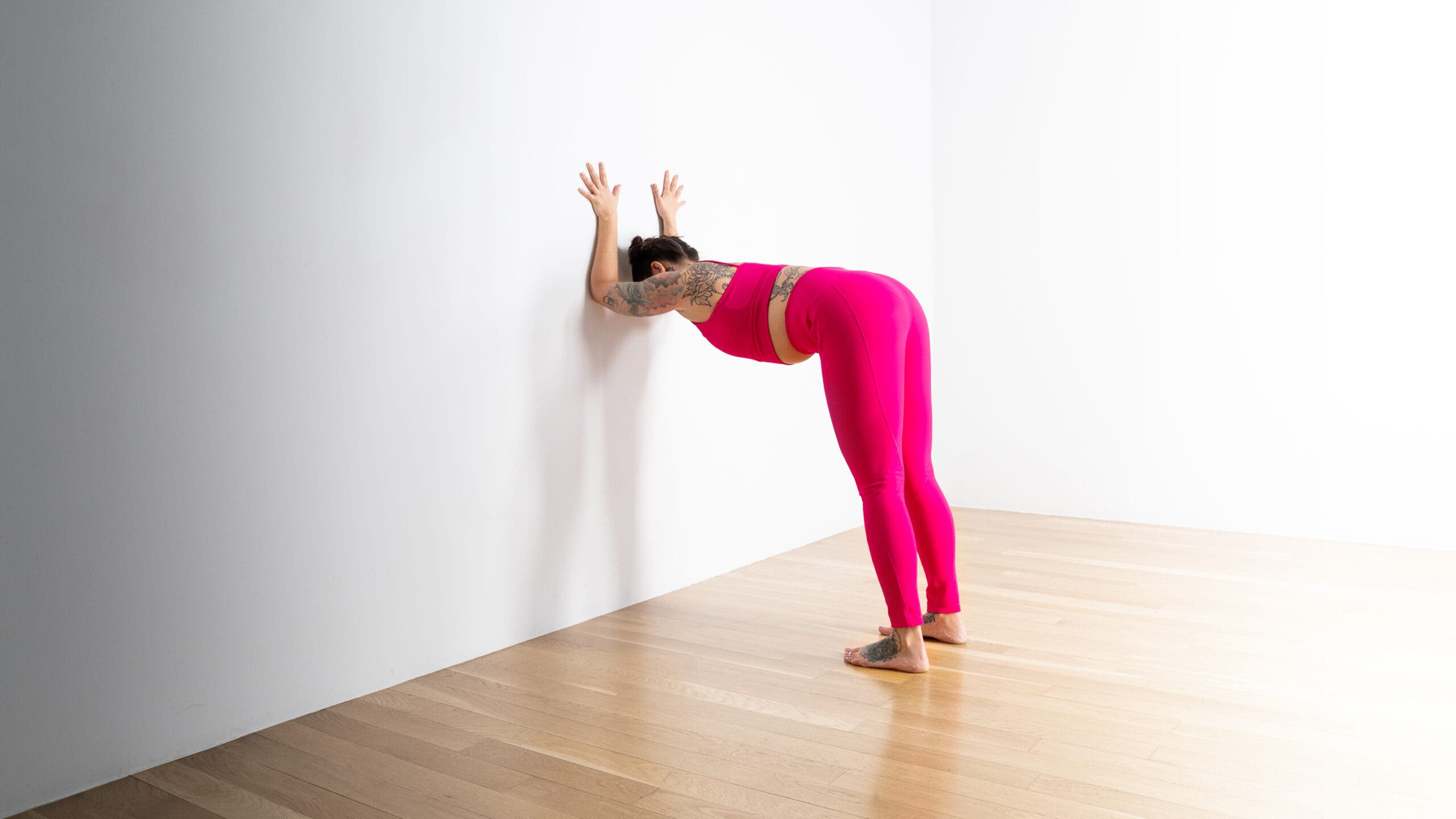Dolphin Pose

(Photo: Andrew Clark)
Dolphin’s virtues are numerous. This pose both opens and strengthens the upper body, making it a great preparation for inversions or a nice substitute posture when you’re not ready to fly your legs above your head, according to yoga instructor Natasha Rizopoulos. With practice, you’ll experience a greater range of motion in your spine and shoulders and build strength in your arms and core while getting accustomed to the idea of bearing weight on your hands, arms, and upper body.
Dolphin Pose: Step-by-Step Instructions
- Come onto the floor on your hands and knees. Set your knees directly below your hips and your forearms on the floor with your shoulders directly above your wrists. Firmly press your palms together and your forearms into the floor.
- Curl your toes under, then exhale and lift your knees away from the floor. At first keep the knees slightly bent and the heels lifted away from the floor. Lengthen your tailbone away from the back of your pelvis and press it lightly toward the pubis. Against this resistance, lift the sitting bones toward the ceiling, and from your inner ankles draw the inner legs up into the groins.
- Continue to press the forearms actively into the floor. Firm your shoulder blades against your back, then widen them away from the spine and draw them toward the tailbone. Hold your head between the upper arms; don’t let it hang or press heavily against the floor.
- You can straighten your knees if you like, but if your upper back rounds it’s best to keep them bent. Continue to lengthen your tailbone away from the pelvis and lift the top of your sternum away from the floor.
- Stay between 30 seconds to one minute. Then release your knees to the floor with an exhale.
Variations
Dolphin Pose with props

It’s important to keep the shoulders, elbows, and forearms aligned in this pose. Using props can help your body get accustomed to the pose. Create a loop with a strap and wrap it around your upper arms. Adjust it until you can press outward against the tension of the strap without your arms going wider than your shoulders. Place a block across the mat in front of you. Put your hands on each side of the block, lower you elbows to the mat and lift your hips to come into the pose. Press you torso toward your legs and feel the opening in your shoulders.
Dolphin Pose preparation

You can prepare for Dolphin by practicing a variation of Tabletop Pose. Come to your hands and knees, aligning your knees under your hips and your hands under your shoulders. (Cushion your knees with a blanket.) Walk your hands forward and bring your elbows down to the mat where your hands were. Clasp your hands or place your palms down so that your forearms are parallel.
Dolphin Pose at the wall

Practice Dolphin from a standing position by using the wall. Stand two feet or more from the wall. Hinge at your hips to come into a half forward fold. Reach forward with your arms and place your hands and forearms on the wall. Adjust your stance so that your foot position feels strong, but you can press your arms firmly into the wall. Align your upper arms and your back to so that your spine and arms extend in one long line.
Dolphin Pose basics
Benefits
- Calms the brain and helps relieve stress and mild depression
- Stretches the shoulders, hamstrings, calves, and arches
- Strengthens the arms and legs
- Helps relieve the symptoms of menopause
- Relieves menstrual discomfort when done with head supported
- Helps prevent osteoporosis
- Improves digestion
- Relieves headache, insomnia, back pain, and fatigue
- Therapeutic for high blood pressure, asthma, flat feet, sciatic
Beginner tips
Open your shoulders by lifting your elbows on a rolled-up sticky mat and pressing your inner wrists firmly to the floor.
Why we love this pose
This pose gives us everything we love about Downward Facing Dog, with the added benefit of being an intense shoulder opener.
Teacher tips
Deepen the Pose
Have students practice lifting from the hips to help distribute the weight more evenly between the feet and the elbows. It is fine to keep the knees bent or the heels off the floor in Dolphin. This may be a pose to avoid for people with shoulder or neck injuries.
Preparatory and counter poses
Preparatory Poses
- Plank Pose
- Uttanasana
- Gomukhasana (arms only)
Follow-up Poses
- Salabhasana (arms only)